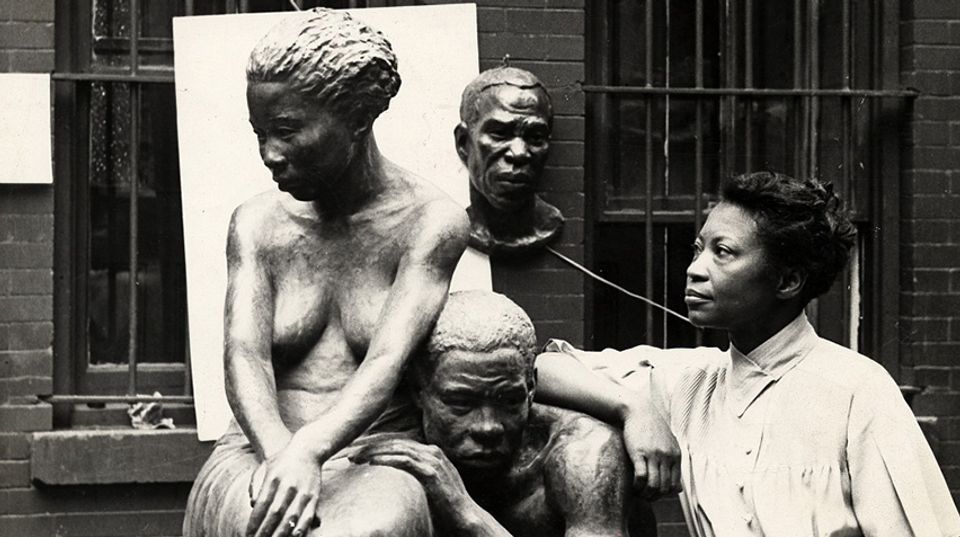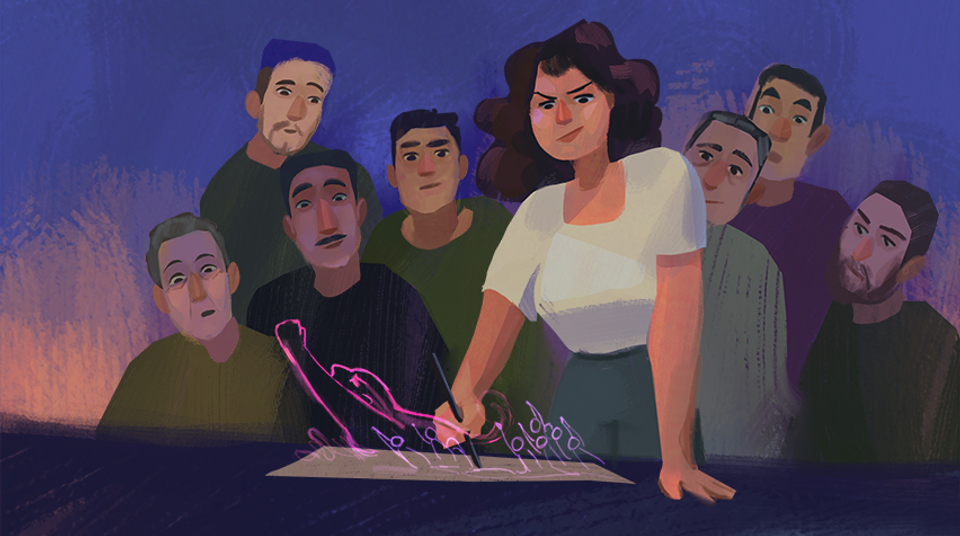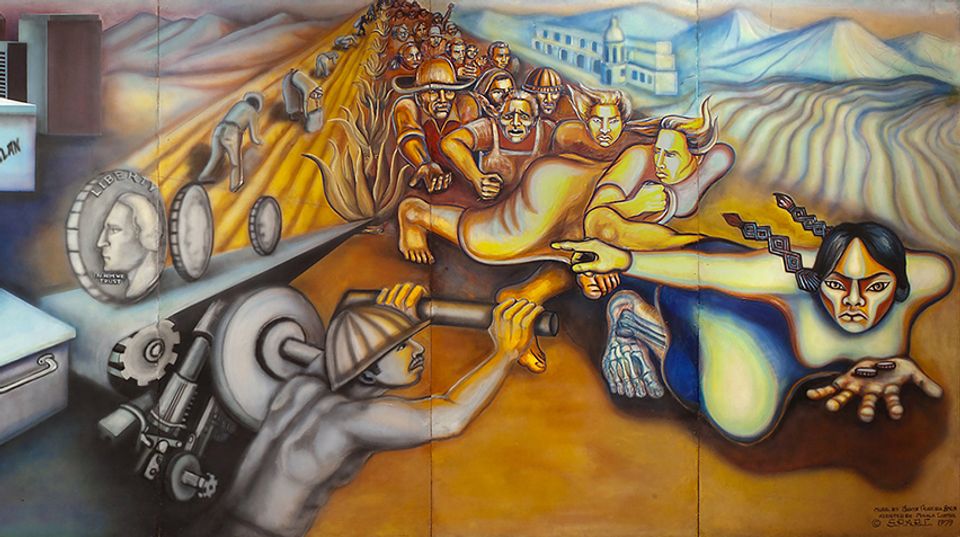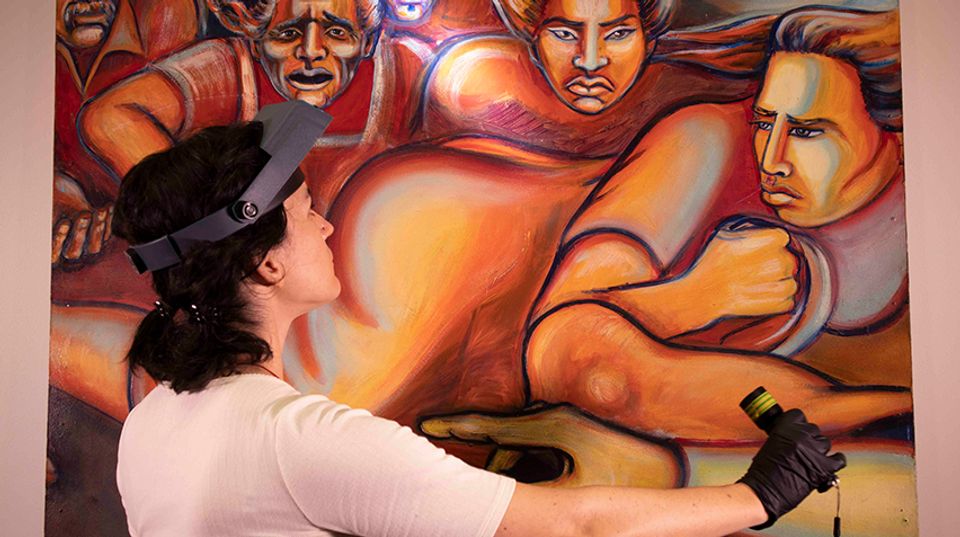Judith F. Baca

Photograph of Judy Baca in her studio, Los Angeles, CA. Photograph: Courtesy of SPARC
- Also known as
- Judith Baca
- Judith Francisca Baca
- Judy Baca
- Born
- Los Angeles, California, United States
- Active in
- Venice, California, United States
- Biography
"As muralist, I am committed to a process that brings community together with the artist for the creation of an art product. It is through this process that the artist often becomes a visual spokesperson for the issues that are affecting the community. Murals have the capacity to effect change on an urban environment. . . . Murals have the added benefit of belonging to no one, therefore to everyone."
–– Judith F. Baca, 1980
Judith F. Baca is a painter, muralist, and scholar known for her community-driven, collaborative initiatives. Describing herself as a "political landscape painter," Baca makes public art that reflects the lives and concerns of historically marginalized populations, particularly women, the working poor, youth, the elderly, LGBTQ+, and immigrant communities.
When Baca entered kindergarten in the 1950s, she was prohibited from speaking Spanish, her primary language. Consequently, her teacher allowed her to paint instead of participating in lessons, sparking a "real visceral love" for color and scale. Baca wanted to be an artist, but her family questioned her aspirations: "What impact does your art have on real life?" In response, she studied various disciplines, including history, education, philosophy, and art, at California State University, Northridge, earning her BA in 1969 and MFA in 1979. Baca briefly dropped out after her junior year, working as a production illustrator at Lockheed Martin Corporation, where she became skilled in drafting and watercolor.
Around 1970, Baca reflected on the lack of Chicanx representation in mainstream arts institutions: "You couldn’t take an aesthetic that wasn’t mainstream into galleries and have it accepted––especially as a woman, and especially as a Chicana." Amid the growing Chicano civil rights movement, Baca taught art in East Los Angeles. Immersed within the neighborhood's visual landscape of graffiti and tattoos, she co-created murals with Chicanx and Mexican communities, which led to her position as Director of Eastside Murals in the Los Angeles Department of Recreation and Parks. In 1974, Baca founded the Los Angeles Citywide Mural Project, which evolved into the community arts organization Social and Public Art Resource Center (SPARC) in 1976.
By the mid-1970s, Baca divorced her husband, moved to Venice, California, and became connected to feminist groups and organizations, later coming out as lesbian. She shifted her practice to "feminist images" of women that addressed her "more incorporating" beliefs around identity, such as Las Tres Marías (1976, SAAM), created for the 1976 exhibition of Chicana artists at the Woman's Building, a feminist cultural space in Los Angeles. The same year, Baca and SPARC embarked on The Great Wall of Los Angeles (1974–present), a multi-year mural project narrating significant moments in California history. In 1977, she returned from the mural workshop El Taller Siqueiros in Cuernavaca, Mexico, where she developed plans for the six-panel portable mural Uprising of the Mujeres (1979, SAAM). The work's mobility was a means of resisting erasure by government officials and reaching a larger audience, ranging from the California State Office of Unemployment in Los Angeles to New York City's all-women’s cooperative A.I.R. Gallery in Dialectics of Isolation (1980).
Across countless public art initiatives, Baca's collaborations reveal locally specific struggles for equity while affirming particular communities' connections to their spaces. In her words, the results are "sites of public memory" that document a more layered story of American history.
Authored by Gabriella Shypula, American Women's History Initiative Writer and Editor, 2024.
- Artist Biography
Judith Baca is a Chicana artist, professor, arts administrator, community leader, and social and cultural activist. She was the founder and artistic director of the Social and Public Arts Resource Center in Venice, California. She also worked with the community on The Great Wall of Los Angeles, which is located in the Tujunga Wash drainage canal in the San Fernando Valley. Begun in the late 1970s and still in progress, it is the longest mural in the world, measuring more than a half mile long. A feminist, Baca was profoundly influenced by her matriarchal upbringing in South Central Los Angeles. She has commented, "On a spiritual and emotional level, mine has been a community of women, some within my own culture but many not."
Jonathan Yorba Arte Latino: Treasures from the Smithsonian American Art Museum (New York and Washington, D.C.: Watson-Guptill Publications, in cooperation with the Smithsonian American Art Museum, 2001)
Related Posts






















